Our Response to COVID-19 →

The rise of medical tourism: A global perspective
Medical tourism, a rapidly evolving industry, has been making headlines worldwide. It has become an increasingly popular choice for millions of patients seeking accessible, affordable, and high-quality healthcare. In this article, we will explore the reasons behind the rise of medical tourism, the current trends shaping the industry, and the challenges and opportunities facing stakeholders in this ever-expanding market.
I. The origins and growth of medical tourism
Medical tourism is not a new phenomenon, as people have traveled for medical treatment for centuries. However, advancements in transportation, communication, and medical technology have transformed the industry, making it more accessible to a broader range of people.
- Factors driving the growth of medical tourism:
a) High cost of healthcare in developed countries: The rising cost of healthcare in countries like the United States has prompted many individuals to seek more affordable alternatives abroad. For instance, a heart bypass surgery in the United States can cost up to $100,000, while the same procedure in India may only cost around $10,000.
b) Long waiting times: Lengthy waiting periods for elective surgeries and specialist consultations in countries with public healthcare systems, such as Canada and the United Kingdom, have driven patients to seek faster treatment in other countries.
c) Accessibility to advanced treatments: Some patients choose medical tourism to access cutting-edge treatments unavailable or not yet approved in their home countries.
d) Improved quality of healthcare services: The quality of healthcare services in developing countries has significantly improved in recent years, with many facilities achieving international accreditations and certifications.
e) Increasing ease of travel: Air travel has become more accessible and affordable, allowing people to travel long distances for medical treatment without significant inconvenience.
II. Popular medical tourism destinations and treatments
The global landscape of medical tourism is diverse, with different regions specializing in various treatments and offering unique advantages to international patients.
- Asia: Countries such as India, Thailand, and Singapore have emerged as major medical tourism hubs in Asia. They offer a wide range of treatments, from orthopedic surgeries and cardiac procedures to cosmetic surgeries and dental treatments. These countries are known for their state-of-the-art facilities, highly skilled medical professionals, and relatively low costs.
- Latin America: Mexico, Costa Rica, and Brazil are among the top medical tourism destinations in Latin America. Patients from the United States and Canada often choose these countries for their proximity and lower cost of treatments. Popular procedures in this region include bariatric surgery, dental care, and cosmetic surgery.
- Europe: Turkey, Hungary, and Poland are gaining prominence in the European medical tourism market. They offer advanced treatments, such as oncology, fertility treatments, and dental care, at competitive prices.
III. The role of technology in the rise of medical tourism
Technology has played a critical role in the growth of medical tourism. The internet and social media have facilitated easier access to information about medical facilities, treatments, and medical professionals. Telemedicine and virtual consultations have also enabled patients to connect with healthcare providers remotely, further increasing the appeal of medical tourism.
IV. Challenges and opportunities in medical tourism
Despite the rapid growth of medical tourism, the industry faces several challenges that must be addressed to ensure its continued success.
- Legal and ethical issues: Differences in medical standards, regulations, and malpractice laws across countries can pose challenges for patients and healthcare providers alike. Ensuring the highest level of care and addressing ethical concerns, such as organ trafficking, will be crucial in maintaining the reputation of the industry.
- Quality and safety concerns: Ensuring the quality and safety of medical treatments and facilities is paramount. International accreditation and certification bodies, such as the Global Healthcare Accreditation(GHA), play a vital role in maintaining high standards.
- Coordination and communication: Effective coordination and communication between healthcare providers, insurance companies, and medical tourism facilitators are essential to ensure a smooth experience for patients. Addressing language barriers and cultural differences can further enhance the patient's overall experience.
- Competition: As the medical tourism industry expands, competition among destinations increases. Countries must invest in the development of their healthcare infrastructure, marketing strategies, and workforce to remain competitive.
V. The future of medical tourism
As the global medical tourism market continues to grow, new trends and opportunities will emerge for both patients and industry stakeholders.
- Personalized medicine and genomics: Advances in personalized medicine and genomics are expected to play a significant role in the future of medical tourism. Patients may travel abroad to access tailored treatments based on their genetic makeup.
- The rise of wellness tourism: Wellness tourism, which focuses on preventive care and holistic well-being, is a growing market. Destinations that offer a combination of medical and wellness services may have a competitive advantage in attracting medical tourists.
- Digital health and virtual care: The integration of digital health technologies, such as telemedicine and AI-driven diagnostics, will likely play a critical role in the expansion of medical tourism. These technologies can help patients access care remotely and provide more personalized, efficient services.
- Sustainable medical tourism: As environmental concerns become increasingly prominent, medical tourism destinations will need to prioritize sustainability and eco-friendly practices in their healthcare infrastructure and facilities.
The rise of medical tourism is a testament to the global demand for accessible, affordable, and high-quality healthcare. As the industry continues to evolve, new challenges and opportunities will shape its future trajectory. By addressing these challenges and capitalizing on emerging trends, medical tourism destinations can secure a sustainable and successful place in the global healthcare landscape.
To receive a free quote please click on the link: https://www.medicaltourism.com/get-a-quote
Patients are advised to seek hospitals that are accredited by Global Healthcare and only work with medical tourism facilitators who are certified by Global Healthcare Accreditation or who have undergone certification from the Certified Medical Travel Professionals (CMTP). This ensures that the highest standards in the industry are met. Click the link to check out hospitals accredited by the Global Healthcare Accreditation: https://www.globalhealthcareaccreditation.com/
It is recommended that consumers do not share their personal and confidential information on random medical tourism platforms as they may not be secure. Consumers must be cautious when disclosing their private information as some organizations may not protect their privacy and could misuse their information. Additionally, there are agencies that may prioritize their commissions over the well-being of the patients. Consumers should avoid choosing the cheapest price and instead make a thorough comparison across multiple facilitators to make an informed decision.
Exploring the Surge of Cosmetic Tourism: Trends and Considerations in Aesthetic Procedures Abroad
Holistic healing: exploring integrative medicine and wellness retreats, meeting the surge: the growing demand for knee replacement surgeries and advances in the field, innovations in medical technology: how cutting-edge technology drives medical tourism, stem cells have powerful anti-aging properties, breakthrough stem cell treatment for autism, new shift for thailand’s medical travel landscape as mta launches new moves, continue reading, featured reading, dominican republic’s giant strides to becoming a global leader in medical tourism, exploring niche markets in medical tourism, medical tourism magazine.
The Medical Tourism Magazine (MTM), known as the “voice” of the medical tourism industry, provides members and key industry experts with the opportunity to share important developments, initiatives, themes, topics and trends that make the medical tourism industry the booming market it is today.
UN Tourism | Bringing the world closer
- All Regions
- 20 Dec 2018
UNWTO/ETC Launch Report on Health Tourism
Share this content.
- Share this article on facebook
- Share this article on twitter
- Share this article on linkedin
PR No. : PR 18100
Madrid, Spain, 27 December 2018 – The World Tourism Organization (UNWTO), together with the European Travel Commission (ETC) launched a new report on health tourism. Part of their joint research programme, the study is the first attempt to set a coherent conceptualization of health tourism and define the motivations behind travellers looking for health-related services.
‘Exploring Health Tourism’ proposes a comprehensive taxonomy with a consistent terminology to define and describe the intricate system of travelling for health purposes and provides a practical toolkit for National Tourism Organizations (NTOs) and Destination Management Organizations (DMOs) wanting to develop health tourism.
As defined in the report, health tourism covers those types of tourism which have as a primary motivation the contribution to physical, mental and/or spiritual health through medical and wellness-based activities.
The report sheds light on the factors shaping health tourism such as technological developments, personal health, data protection and urbanization. It also explores the market, the demand and the supply of health tourism and provides examples of marketing management. Finally, the study proposes a set of recommendations ranging from improved data collection and more accurate measurement to more accessible and sustainable health tourism calling for further partnerships.
Useful links:
Exploring Health Tourism Report
Exploring Health Tourism Report- Executive Summary
UNWTO Communications Department
Tel: (+34) 91 567 8100 / Fax: +34 91 567 8218 / [email protected]
Follow us on Facebook , Twitter , Instagram , YouTube , LinkedIn and Flickr .
Related Content
Kingdom of morocco wins high-level vote to host next wo..., tourism has ‘life-changing potential’ - world tourism o..., the world tourism organization and globalia launch the ..., world tourism organization general assembly opens with ....
Health & medical tourism
Simply synonyms?
Cite this chapter

- Vivien Breitrück &
- Elena Nunn
4293 Accesses
When reading about health and medical tourism one might think that both terms apply to the same category of tourism, based on: caring for one's health, stress relief, personal wellbeing, fitness and body attractiveness. Indeed, many times these two terms are used as synonyms for one another. For a better understanding of the whole subject, the separation between health tourism and medical tourism is vital to show that both categories are not the same but yet related to one another. Both trends have emerged due to changes in demographics, today's education, standard of living, social behaviour, and lifestyle.
This is a preview of subscription content, log in via an institution to check access.
Access this chapter
- Available as PDF
- Read on any device
- Instant download
- Own it forever
- Compact, lightweight edition
- Dispatched in 3 to 5 business days
- Free shipping worldwide - see info
Tax calculation will be finalised at checkout
Purchases are for personal use only
Institutional subscriptions
Unable to display preview. Download preview PDF.
7.5 References
Albaner, J. & Grozea-Helmenstein, D. (2002), Bestandsaufnahme der Entwicklungspotenziale im Gesundheitstourismus, DSFT Wissensportal Web site, URL: www.wissen.dsftberlin.de/Bestandsaufnahme_der_Entwicklungspotenziale_im_Ges/Info-24-282-4-4.0.html , Access Date: 10/12/08
Bad Sulza (n.d.), Wikipedia Web site, URL: www.de.wikipedia.org/wiki/Bad_Sulza , Access Date: 13/12/08
Bellmann, T. (n.d.), Bachelor Thesis on Wellness Case Management
Google Scholar
Connell, J. (2006), Medical tourism: Sea, sun, sand and … surgery, Tourism Management, 27, 1093–1100
Article Google Scholar
Conrady, R. & Buck, M. (2008),Trends and issues in global tourism 2008, Berlin & Heidelberg, Germany: Springer Verlag
Book Google Scholar
Der Reiseablauf (n.d.), Erste-Wahl-Lasik Web site, URL: www.erste-wahl-lasik.de/index.html , Access Date: 07/01/09
Der Ablauf (n.d.), Laser Travel Web site, URL: www.lasertravel.de/augenlasern/ablauflasik-kurzsichtigkeit-weitsichtigkeit.html , Access Date: 07/01/09
Ehrbeck, T., Guevara, C. & Mango, P. (2008),The McKinsey Quarterly: Mapping the Market for Medical Travel, McKinsey & Company, 4–5
Heilmittel und Indikationen (n.d.), Bad Sulza Kur und Weinstadt Web site, URL: www.bad-sulza.de/de/node/17 , Access Date: 05/01/09
Jagyasi, P. (n.d.), Medical tourism defined, ExHealth Web site, URL: www.consultant medicaltourism.com/definition_and_terms.html , Access Date: 05/01/09
Krczal & Weiermair (2006), Wellness und Produktentwicklung: erfolgreiche Gesundheitsangebote im Tourismus, Berlin, Germany: Erich Schmidt Verlag GmbH & Co.
Kur (n.d.), Wikipedia Web site, URL: www.de.wikipedia.org/wiki/Kur , Access Date: 13/12/08
Malik, Dr. J. (n.d.), Medical Tourism, The Associated Chambers of Commerce and Industry of India Web site, URL: www.assocham.org/events/recent/event_35/sanjeev_malik.ppt , Access Date: 07/01/09
Medical Tourism (n.d.), india.gov.in Web site, URL: www.india.gov.in/overseas/visit_india/medical_india.php , Access Date: 12/12/08
Medical Tourism (n.d.), Here's Your Answer Web site, URL: www.hal2009.wordpress.com/2009/01/03/medical-tourism /, Access Date: 05/01/09
Rulle, M. (2008), Der Gesundheitstourismus in Europa: Entwicklungstendenzen und Diversifikations-strategien. München, Germany & Wien, Austria: Profil Verlag.
Terme di Saturnia Spa Resort (n.d.), Wellnessfinder Web site, URL: www.wellnessfinder.com/hotels/1176-terme-di-saturnia-spa-resort.html , Access Date: 13/12/08
TUI Vital (n.d.), TUI.com Web site, URL: www.tui-vital.de /, Access Date: 15/12/08
Unsere Angebote (n.d.), Mediplus Reisen Web site, URL: www.mediplusreisen.de/web/index.cfm/pm/Uebersicht/anzeigestart/7/idland/0/idregion/0/idort/0/idsaison/0/idreiseart/48/startseite/0/idIndikation/0/idAnwendung/0/navistatus/angebote/web/Objektuebersicht.htm , Access Date: 12/12/08
Wellness & Care (n.d.), Thomas Cook Web site, URL: www.holidayjasmin.de/Aktuell/RZ_Wellness_VorabFolder0708END.pdf , Access Date: 15/12/09
7.6 Recommended reading
Ehrbeck, T., Guevara, C. & Mango, P. (2008), The McKinsey Quarterly: Mapping the Market for Medical Travel, McKinsey & Company, 4–5
Krczal & Weiermair (2006),Wellness und Produktentwicklung: erfolgreiche Gesundheitsangebote im Tourismus, Berlin, Germany: Erich Schmidt Verlag GmbH & Co.
Rulle, M. (2008), Der Gesundheitstourismus in Europa: Entwicklungstendenzen und Diversifikations-strategien, München, Germany & Wien, Austria: Profil Verlag
Download references
You can also search for this author in PubMed Google Scholar
Editor information
Rights and permissions.
Reprints and permissions
Copyright information
© 2011 Gabler Verlag | Springer Fachmedien Wiesbaden GmbH
About this chapter
Breitrück, V., Nunn, E. (2011). Health & medical tourism. In: Papathanassis, A. (eds) The Long Tail of Tourism. Gabler. https://doi.org/10.1007/978-3-8349-6231-7_7
Download citation
DOI : https://doi.org/10.1007/978-3-8349-6231-7_7
Publisher Name : Gabler
Print ISBN : 978-3-8349-3062-0
Online ISBN : 978-3-8349-6231-7
eBook Packages : Business and Economics Business and Management (R0)
Share this chapter
Anyone you share the following link with will be able to read this content:
Sorry, a shareable link is not currently available for this article.
Provided by the Springer Nature SharedIt content-sharing initiative
- Publish with us
Policies and ethics
- Find a journal
- Track your research

What is health tourism and why is it growing?
Disclaimer: Some posts on Tourism Teacher may contain affiliate links. If you appreciate this content, you can show your support by making a purchase through these links or by buying me a coffee . Thank you for your support!
Health tourism is a growing trend around the world. But what is health tourism and why is it so popular? Read on to find out…
What is health tourism?
The growth of health tourism, why is health tourism important, health tourism activities, health tourism- further reading.
Health tourism is a tricky one to define. It is more of an umbrella term, encompassing both wellness tourism and medical tourism. These two types of tourism may seem quite different, but they both fundamentally have health at their core. So, health tourism can be defined as follows:
Health tourism covers those types of tourism which have as a primary motivation, the contribution to physical, mental and/or spiritual health through medical and wellness-based activities which increase the capacity of individuals to satisfy their own needs and function better as individuals in their environment and society.
This definition comes from an executive summary published by the World Tourism Organization and the European Travel Commission in 2018. As you can see, the exploration of health tourism in itself is a relatively new idea. The two organisations also provided the following definitions of wellness and medical tourism respectively:
Wellness tourism is a type of tourism activity which aims to improve and balance all of the main domains of human life including physical, mental, emotional, occupational, intellectual and spiritual. The primary motivation for the wellness tourist is to engage in preventive, proactive, lifestyle enhancing activities such as fitness, healthy eating, relaxation, pampering and healing treatments.
Medical tourism is a type of tourism activity which involves the use of evidence-based medical healing resources and services (both invasive and non-invasive). This may include diagnosis, treatment, cure, prevention and rehabilitation.

There are many reasons as to why health tourism as an industry is growing. People are keener than ever to put their health and wellbeing first – especially now we are 2 years into a global pandemic. As a population , we are more aware now than ever before how our health can hang in the balance. And just knowing this, coupled with all of the other changes brought about by the pandemic as well as the general ease of accessing information, mean that life is generally more stressful. So it is no wonder that we are looking for wellness trips to calm and soothe ourselves – and to affordable and accessible medical procedures that may be unavailable at home…
The UK sees health tourism as a distinct and negative phenomenon. The media uses the term to refer to people who travel to the UK deliberately in order to access free medical treatment from the National Health Service. This is seen as leeching off the state, and as you can imagine is particularly frowned upon by many in the country. However, reports show that the government estimates ‘health tourism’ costs the NHS only £300m annually – or 0.3% of their budget! But due to this, new laws are in place to charge people who do not ‘ordinarily reside’ in the UK if they use the NHS.
Health tourism is important for many reasons. Looking at it from an economical point of view, it provides a boost to local economies when people travel to a destination for any reason. So heading to a summer yoga retreat in Santorini or getting some dental work done in Turkey is contributing to the local economy. And it’s not just the cost of your treatment or stay – you will also purchase food and drink, maybe even souvenirs. You might extend your trip and do some sightseeing with local tour companies too. All of these things mean a cash injection for the area and its inhabitants.
Linked to this is that health tourism often provides a cheaper opportunity to do something you were going to do at home. Travelling for optional surgery or going to a small spa in a remote village might be much cheaper than doing so in your home country. In this way, health tourism actually provides people with a way to save money.
Health tourism is also important as it is a reflection of my earlier point – people are taking more of an interest in their health. Regardless of whether it’s wellness tourism or medical tourism, health tourists are travelling with the primary focus of improving their mind, body or life in some way. This is obviously a positive factor for society.
As health tourism combines wellness and medical tourism, the activities it involves are anything which falls under these categories. Essentially, anything you do as a tourist which is aimed at improving your health is classed as health tourism. See a list of activities below:
- Dental/dentistry
- Orthopedics
- Cosmetic/plastic surgery
- Bariatric surgery
- Fertility treatment
- Eye surgery
- Ears, nose and throat
- Organ transplants
- Rehabilitation
- Alternative medication access
- Yoga retreats
- Writing retreats
- Meditation centres
- Weight loss or healthy eating retreats
- Sensory deprivation
Popular health tourism destinations
There are many destinations you can visit as a health tourist. Your home country may also be a health tourism location for people from other countries. It is all contextual and subjective, depending on what exactly you are looking to get out of your trip…

This is a popular place for health tourism – particularly when it comes to wellness. With its geothermal pools, breathtaking scenery, infinity pools and mountain hiking areas the options are endless! A very popular part of Iceland for wellness activities is Myvatn Nature Baths, where the alkaline in the water has a lot of minerals and is incredibly beneficial for the treatment of skin conditions. Because of this, it can also be seen as a destination which works for medical purposes – making it a dead cert for health tourism.
Ever heard of the saying ‘Turkey teeth’? It doesn’t come from nowhere! The reason this term exists is because many people (particularly younger people, celebrities, and influencers) flock to Turkey to have dental treatment done for cosmetic purposes. They want straighter, whiter and brighter teeth. Something like this might cost double or triple in the UK, for example, than what it would in Turkey. Plus, visitors get to combine their trip with sun, sea and sand!
India is a big one for health tourism as it has a big wellness tourism industry combined with many options for medical tourists to have cheaper procedures done. Being such a spiritual country, it is no wonder that people come here for wellness purposes. The Indian government readily promotes the country as a hub for yoga, Sidha, naturopathy and Ayurveda – citing the ‘spiritual philosophy that has been integral to the Indian way of life’. There are retreats right across the country, particularly in countryside areas but also in the bustling cities which mean it works for both primary AND secondary wellness tourism.
Primary wellness tourism is when someone’s whole trip is focused on wellness; it is their sole reason for travel, and the major component of their trip. Every aspect of their holiday is tailored to wellness. Secondary wellness tourism is when general tourists incorporate some aspect of wellness (a massage on the beach during an all-inclusive Mexican vacation) into their holiday.
India is also a huge destination when it comes to medical tourism. Locations such as Chennai, Maharashtra and Kerala are really popular for medical procedures, with costs being about one tenth of those in either the UK or the USA. Medical tourists travel to India for alternative medicine, cardiac procedures, bone-marrow transplants, eye surgery and hip replacements in particular.
Beautiful Hawaii is like one big spa in itself. Primary wellness tourists visit here in droves to experience the therapeutic salt water, the laid back atmosphere, the glorious sunshine and the traditional practices of omilomi massage and pohaku (hot stone treatment). With scenery that will leave you lost for words, it is one of the most relaxing places in the world which is why wellness tourism is so big here – and so, by extension, is health tourism.
This stunning country has cutting edge technology and beautiful spaces to relax – making it ideal for health tourism encompassing both wellness and medical tourism. People tend to head here for small elective surgeries, choosing to get the procedure done for a lower price and recover somewhere beautiful! And there are so many options for wellness tourists, too. From Thai massage parlours to serene meditation retreats on beaches where the sunsets are bright pink and shiny gold, you couldn’t ask for somewhere more suited to a relaxing wellness trip.
If you enjoyed this article on health tourism, I am sure that you will like these too-
- What is birth tourism and is it legal?
- What is special interest tourism and why is it so popular?
- What is alternative tourism and why is it growing so fast?
- What is dental tourism and why does it exist?
Liked this article? Click to share!
Academia.edu no longer supports Internet Explorer.
To browse Academia.edu and the wider internet faster and more securely, please take a few seconds to upgrade your browser .
Enter the email address you signed up with and we'll email you a reset link.
- We're Hiring!
- Help Center

eHealth and Tourism

International tourist arrivals worldwide reached 842 million in 2006. Many travellers fall ill while being abroad. The WHO advises travellers to get information about the destination especially when they have been ill before. In case of illness information, e.g. about doctors and hospitals, and communication, e.g. with relatives or the family doctor, are important. Although the combination of eHealth and tourism suggests itself, neither information nor medical science answer the question which information people in case of illness while being abroad need and which media might be suitable. In this paper, we present a survey on information needs of travellers and the role of the internet. Furthermore, we studied the acceptance of mobile eHealth services and the willingness to pay.
Related Papers
Oleg Zolotarev
With the rapid progress in mobile healthcare and Internet medicine, the impact of telehealth and telemedicine on the satisfaction of patients and their willingness to travel has become a focus of the academic research community. This study analyses the differences between telehealth and telemedicine and their role in medical tourism. We examine how the information quality and communication quality of telehealth and telemedicine influence patient satisfaction, and their effects on patients’ willingness to undertake medical travel and on their medical travel behaviours. We conducted an empirical study on the use of telehealth and telemedicine and on medical travel behaviour in Azerbaijan using a survey for data collection. A total of 500 results were collected and analysed using SmartPLS 3.0. Results show that (1) the communication quality and information quality of telehealth and telemedicine and their effects on satisfaction have significantly positive influences on willingness to u...
Journal of the American Medical Informatics Association
Phung-Anh (Alex) Nguyen , Yasutoshi Kimura , George Mihalas
The Open Medical Informatics Journal
The Open Medical Informatics …
An emerging trend is what has become commonly known as ‘Medical Tourism’ where patients travel to overseas destinations for specialised surgical treatments and other forms of medical care. With the rise of more affordable cross-border travel and rapid technological developments these movements are becoming more commonplace. A key driver is the platform provided by the internet for gaining access to healthcare information and advertising. There has been relatively little attention given to the role and impact of web-based information to inform Medical Tourism decisions.This article provides a brief overview of the most recent development in Medical Tourism and examines how this is linked to the emergence of specialized internet web sites. It produces a summary of the functionality of medical tourist sites, and situates Medical Tourism informatics within the broader literatures relating to information search, information quality and decision-making.This paper is both a call to strengthen the empirical evidence in this area, and also to advocate integrating Medical Tourism research within a broader conceptual framework.
Current Issues and Emerging Trends in Medical Tourism
Phillip Pardo
Medical tourism, as has been mentioned numerous times in other chapters in this book, is not a new concept, but what happened in the early 1990's with the advent of the Internet was truly novel. For most medical physicians the potential of this innovation was quite unexpected and at first difficult to accept. Some however embraced it… this is the story of one doctor practicing in Belgium who saw the potential of the web and instead of bowing to the perceived threat, embraced its full potential from day one. By looking at the effects of the internet on Medical Tourism using a SWOT analysis and following this pioneer from the mid 1990's (remember that 1993 marks the first real use of websites), this chapter tries to map the earliest evolution of the use of the web for the delivery of medicine and medical advice.
Consilium Sanitatis: Journal of Health Science and Policy
Riskha Dora Candra Dewi, S.Sos, MH Kes
Objective: This study aims to examine the Development of Medical Tourism with Preventive Technology: Medical Wellness. Methods: This research was studied using the literature study method, sourced from national and international journals. Journal sources used include Pubmed, Google Scholar, Elsevier, and ResearchGate. Results: The study results show that telemedicine and telehealth (or e-health systems) covering all health service providers that use information and communication technology for diagnosis, treatment and prevention of health services can become a preventive technology in the practice of medical tourism and medical wellness in Indonesia. This is because information and communication technology development can be an essential factor in realizing the successful development of medical tourism in Indonesia. Conclusion: The reputation of Bali's tourism infrastructure in Indonesia and the ASEAN region is relatively well established. Growth in health and wellness travel du...
Journal of Travel Medicine
Brian Gushulak
Mediterranean Journal of Social Sciences
Mitja Gorenak
Mobile technologies have drastically changed the way people do everyday activities. Tasks previously reserved for desktop environments have moved to mobile devices, and nowadays, half of the internet traffic is stemming from mobile devices. The tourism industry is no exempt from the shift from desktop to mobile. In our research, we check to what extent natural health resorts have adapted and integrated mobile solutions to their websites. We collected data about the friendliness of selected websites using automated online tools and carried out a heuristic evaluation. The results were statistically analyzed and compared. Only roughly half of natural health resorts have optimized their websites for mobile devices. There are no statistically significant differences when comparing purely technical aspects. However, an in-depth heuristic evaluation has shown that some web sites are significantly more mobile-friendly than others and offer better technical conditions for enhanced user exper...
Marcelo Chagas
Given that tourism is the largest industry for income in the world in some countries, more attention to it seems quite logical. In recent years information technology practice has evolved all organizations, particularly the tourism industry. Appropriate benchmarking of countries that already have good ratings in the world in the industry in terms of number and in terms of income, Can shorten and optimize the path of success as much as possible and. In this regard, the role of the Internet in the era of globalization is very important, hence the use of this technology is highly regarded for tourism that in this study we examine the strategies and challenges. Therefore with referring to health centers of Razavi and Imam Reza in Mashhad, and statistical information on how to get familiar with these centers, from clients residing abroad and analysis of this data were examined with spss software. And indicators effective in getting information by patients from the medical center were determined. Results showed that the most use from the Internet was by personal computers and mobile phones, respectively.
RELATED PAPERS
IOSR Journals
INA MARYANI
Polish Journal of Ecology
Lech Kufel , Małgorzata Strzałek
Ljetopis Studijskog centra socijalnog rada
kristina urbanc
Osvaldo Aly
Chemical Communications
ferdinand gonzaga
Camilla Bahamonde
Proceedings of the Art and Design International Conference (AnDIC 2016)
Rosiah Md Noor
Carnets de géologie (Notebooks on geology)
José Piçarra
The Review of Laser Engineering
Rebeca Fernandes
Conservation
Rishi Kattel
Actual Problems of Theory and History of Art
Martina Majstorović
Ciência Rural
Fabiana cunha
Molecular and Cellular Biochemistry
Luis Omar Scaramal
Jurnal Administrasi Bisnis
Tania Adialita
Experimental parasitology
Celeste Mansilla
Journal of High Energy Physics
Makoto Sakaguchi
Mzirai Omari
Enciclopédia Biosfera
Rafael Calderon
Sância Pires
Cold Spring Harbor perspectives in medicine
Elizabeth Fry
Journal of Hepatology
JUAN BAUTISTA GARCIA ACEVEDO
arXiv (Cornell University)
Richard Hatcher Jr
Dr. Ir. Gunarto Latama, M.Sc.
RELATED TOPICS
- We're Hiring!
- Help Center
- Find new research papers in:
- Health Sciences
- Earth Sciences
- Cognitive Science
- Mathematics
- Computer Science
- Academia ©2024
You are using an outdated browser. Upgrade your browser today or install Google Chrome Frame to better experience this site.
Medical Tourism: Travel to Another Country for Medical Care
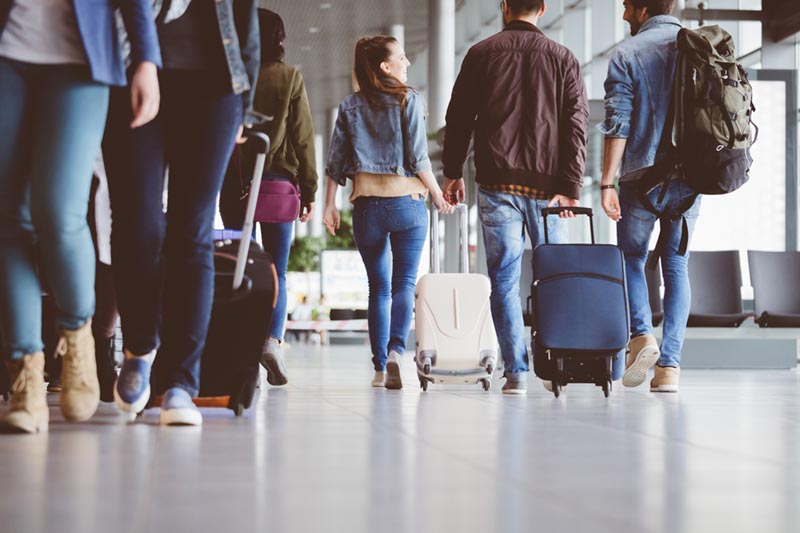
Traveling to another country to get medical care can be risky. Learn about the risks and how to minimize them.
Traveling Internationally for Medical Care
Each year, millions of US residents travel to another country for medical care which is called medical tourism. Medical tourists from the United States most commonly travel to Mexico and Canada, and to several other countries in Central America, South America, and the Caribbean.
The reasons people may seek medical care in another country include:
- Cost: To get a treatment or procedure that may be cheaper in another country
- Culture: To receive care from a clinician who shares the traveler’s culture and language
- Unavailable or unapproved procedures: To get a procedure or therapy that is not available or approved in the United States
The most common procedures that people undergo on medical tourism trips include dental care, cosmetic surgery, fertility treatments, organ and tissue transplantation, and cancer treatment.
Medical Tourism Can Be Risky
The risk of complications depends on the destination, the facility where the procedure is being performed, and whether the traveler is in good health for the procedure(s). Other issues that can increase a traveler’s risk of complications include:
Infectious Diseases. All medical procedures have some risk of infection. Complications from procedures performed in other countries include wound infections, bloodstream infections, donor-derived infections (in the case of transplantations or transfusions), and diseases such as hepatitis B, hepatitis C, and HIV.
Antimicrobial resistance. Highly drug-resistant bacteria and fungi have caused disease outbreaks among medical tourists. Antimicrobial resistance happens when germs develop the ability to not respond to drugs such as antibiotics used to treat infections. Antimicrobial resistance is a global problem. Healthcare facilities in another country may not have adequate infection control practices and medical tourists could be at risk for getting a drug-resistant infection.
Quality of Care. Some countries’ requirements for maintaining licensure, credentialing, and accreditation may also be less than what would be required in the United States. In some countries, counterfeit medicines and lower quality medical devices may be used.
Communication challenges. Communicating with staff at the destination and healthcare facility may be challenging. Receiving care at a facility where you do not speak the language fluently could lead to misunderstandings about your care.
Air Travel. Flying after surgery can increase the risk for blood clots, including deep vein thrombosis . Delaying air travel for 10-14 days following major surgeries, particularly those involving the chest, will minimize risks associated with changes in atmospheric pressure.
Continuity of Care. Travelers may need to get health care in the United States if they develop complications after returning. Follow-up care for complications might be expensive. Treatment might be prolonged and might not be covered by your health insurance.

How You Can Minimize Medical Tourism Risks
Research the clinician and facility.
- Check the qualifications of the clinician who will be doing the procedure and the credentials of the facility where the procedure will be done. Accrediting groups, including Joint Commission International, DNV GL International Accreditation for Hospitals, and the International Society for Quality in Healthcare, have lists of standards that healthcare facilities need to meet to be accredited. Please note that all surgeries carry the risk of complications and accreditation does not guarantee a positive outcome.
- If you go to a country where you do not speak the language, determine ahead of time how you will communicate with your clinician and others who will be caring for you.
Before you travel
- Get a pretravel consultation. See your healthcare provider or a travel medicine clinician at least 4–6 weeks before the trip to discuss general information for healthy travel and learn about specific risks you may face because of your health status, the procedure, and travel before and after the procedure.
- Obtain international travel health insurance that covers medical evacuation back to the United States.
- Find out what activities are not recommended around the time of the medical procedure, such as swimming or hiking, and plan accordingly.
Maintain your health and medical records
- Bring copies of your medical records with you, including results of lab tests and other tests related to your condition and care. Inform the medical staff at your destination of allergies you may have.
- Pack a travel health kit with your prescription and over-the-counter medicines in their original packaging. Bring enough medicine to last your whole trip, plus a little extra in case of delays. Also, bring copies of all your prescriptions and a list of medications you take, including their brand names, generic names, manufacturers, and dosages.
- Get copies of all your medical records from the medical facility at your destination before you return home. You may need to get them translated into English.
Arrange for follow-up care before you travel
- Identify where you will be staying immediately after the procedure.
- Make sure you can get any needed follow-up care in the United States. Follow-up care for medical complications can be expensive and might not be covered by your health insurance. Travelers considering procedures outside the United States should understand the potential financial costs associated with follow-up care or emergency care in the event of complications, review their health insurance policies to determine what, if anything, is covered and plan for the possibility of paying for additional care out-of-pocket.
- Supplemental travel health insurance may also be available to cover follow-up or emergency care from procedures received abroad.
Related Resources
- CDC Yellow Book: Medical Tourism
- American Medical Association Ethical Guidance on Medical Tourism
- Organization for Safety, Asepsis, & Prevention's Traveler’s Guide to Safe Dental Care
- The International Society of Aesthetic Plastic Surgery guidelines for travelers
- International Travel (US Department of State)
- Your Health Abroad (US Department of State)

File Formats Help:
- Adobe PDF file
- Microsoft PowerPoint file
- Microsoft Word file
- Microsoft Excel file
- Audio/Video file
- Apple Quicktime file
- RealPlayer file
- Zip Archive file
Exit Notification / Disclaimer Policy
- The Centers for Disease Control and Prevention (CDC) cannot attest to the accuracy of a non-federal website.
- Linking to a non-federal website does not constitute an endorsement by CDC or any of its employees of the sponsors or the information and products presented on the website.
- You will be subject to the destination website's privacy policy when you follow the link.
- CDC is not responsible for Section 508 compliance (accessibility) on other federal or private website.

E-Health Tour Privileged Life
As E-Health Tour; In line with world health standards, we offer privileged health consultancy to patients who demand international health services with our international health tourism authority . Our health tourism service covers Turkey and the international area and includes contracted and accredited health institutions in many countries such as India and Taiwan as well as Turkey .
- Our priority is to offer a privileged and reliable treatment process to our patients who want to continue their healing journey with us .
- We support you in your treatment process and in the next stages .
- We carry out our work within the framework of professional experience, honesty, loyalty, and dignity .
- We offer complication insurance to avoid worries and have a safe health experience .
Aesthetic and Plastic Surgery
Plastic surgery includes categories such as reconstructive surgery, hand surgery, craniofacial surgery, microsurgery, and burn treatment . These are surgical methods used to repair all acquired or congenital tissue and organ loss affecting the skin, subcutaneous, and bones on the body surface . Aesthetic/cosmetic surgery is applied to further beautify and perfect the body appearance .
- Skin cancers and surgical treatment ,
- Post-traumatic functional disorders of the hand ,
- Eyelid disorders,
- Breast augmentation/reduction, liposuction, facelift, etc, transactions .
Obesity Surgery
Bariatric surgery, also known as bariatric surgery, is recommended for patients with a body mass index of 40 and above (morbidly obese) or a body mass index of over 35 and who cannot lose weight with methods such as medical nutrition, exercise, and medical treatment under the supervision of a specialist . It can also be applied to patients receiving cardiovascular diseases and diabetes treatment .
- Fast weight loss,
- Permanent weight maintenance ,
- Eliminating disease risks ,
- A healthy and quality life .
Hair Transplantation
Hair transplantation is a natural and permanent solution to the problem of thinning and baldness in people with hair loss or hair loss . Healthy hair follicles are transplanted to areas where the hair follicle is no longer active and where balding occurs, using microsurgical methods . Hair transplantation is planned and applied completely individually . It is performed in a hospital environment by experts and experienced doctors and teams .
- Personal planning and implementation is done .
- The patients own healthy hair is added .
- The persons own hair is permanently restored as if it had never been shed .
- Natural hair appearance is provided with modern medical applications .
Mouth and dental health
Mouth and dental health Oral and maxillofacial health includes extensive application areas and allows for solving both medical and cosmetic problems . All surgical operations are performed by a highly trained dental surgeon . Operations such as the treatment of diseases related to the face, jaw, and mouth, and correction of injuries or defects are the operations performed in this unit .
- Personal planning and implementation is done ,
- Implant (maxillofacial, dental), Tooth Extraction, Impacted Tooth Extraction,
- Sinus Lifting and Cyst or Tumor Resection,
- It covers procedures such as Genioplasty, Maxillary Osteotomy, Mandibular Osteotomy, and Bimaxillary Osteotomy within the scope of jaw surgery .
Eye Disorders and Diseases
Disturbances that cause deterioration or complete loss of vision due to environmental, genetic or age-related factors that may occur in the eyes, which are among the most important and sensitive sensory organs of the body, can affect the patients life in an extremely negative way . Many eye diseases can be treated in individuals who have regular check-ups and start to receive the necessary treatment when the disease is in the early stages, thanks to early diagnosis, Treatment areas .
- Cataract, Glaucoma, Strabismus,
- Diabetic Retinopathy,
- Tear Duct Occlusion,
- Blepharoplasty, Refractive Surgery .
Orthopedics
The field of orthopedics and traumatology uses the latest technologies to diagnose congenitally and acquired musculoskeletal diseases, as well as medical and surgical treatment . Diagnosis and treatment of orthopedic diseases are becoming more important today due to functional limitation . It is divided into different branches in terms of the diseases that Orthopedics and Traumatology deal with .
- Traumatology, Sports traumatology, and Arthroscopic surgery,
- Spine, Prosthesis, foot and ankle surgery,
- Tumor surgery,
- Pediatric orthopedics, etc.
Interventional Neuroradiology
All kinds of treatment procedures performed with imaging methods are evaluated within the scope of interventional radiology . It is performed with the interventional neuroradiology and angiography method used in the treatment of vascular problems in the head/neck region and brain and even the spinal cord . The treatment of the problems in the veins of the brain, which is at the most extreme point, by entering through the groin and going from the vein to the brain, is often done with this method .
- Acute stroke treatment,
- Sudden congestion in brain vessels ,
- Recovering brain tissue,
- Paralysis or other obstacles are prevented .
Thermal-Wellness Tourism
Thermal tourism includes our relaxing health services, which are provided under the supervision and control of various specialists and physicians, to benefit human health along with environmental and climatic elements in regions with thermal waters . Thermal water treatments are used for the purpose of improving health, protecting, and being fit, Thermal medical applications .
- Spa, hammam, mud treatments ,
- Gas bath, inhalation therapy ,
- Drinking cures,
- Covers marine treatments.
Check-up is a health service that covers all diagnostic and examination applications carried out for the purpose of evaluating the general health status of people, clarifying the risk factors for diseases, and controlling and management of existing health problems . Depending on various parameters such as the age of the person applying for a check-up, additional diseases, and risk factors; The health status of the person is evaluated by using certain screening tests . If necessary, the patient can be referred to other tests, lifestyle changes can be suggested, or treatment can be started .
- Complete blood count (hemogram) and complete urinalysis ,
- Blood lipid (blood fat and cholesterol) levels ,
- Chest X-ray and electrocardiography ,
- Thyroid function test is examined .
Naturopatic Tests
We will perform both standard and specialized naturopathic lab tests as part of the assessment process . Naturopathic doctors can order many of the same diagnostic tests as your family physician, such as blood work, stool, urine, and saliva testing . We can also perform an H Pylori Breath Test, Stool Ova and Parasite testing .
- Gastrointestinal Testing
- Laboratory Tests on Hormonal Levels
- Cardiovascular Lab Tests
- Toxins & Pollutant Testing
Genetic Tests
Genes are DNA instructions that we all inherit from our parents . Different “mistakes” in our genes, called mutations, can cause different diseases . Some of these diseases are rare, like cystic fibrosis or Huntington’s disease, others are common, like cancer . Genetic tests can be used to confirm the diagnosis or give you information about possible development of a disease .
- public.website.index.PCR
- public.website.index.DNA Sequencing
- public.website.index.Cytogenetics (Karyotyping and FISH)
- public.website.index.Microarrays
Aside from tissue biopsy, cytology serves as an indispensable tool in screening and diagnosing cancer . In this technique, a cytological material is obtained from the patient, spread onto glass slides for microscopic examination, stained, screened for abnormalities and assessed prior to the issuance of a final report .
- Gynaecological Cytology
- Non-Gynaecological Cytology
- Fine Needle Aspiration Cytology
- BAL Differential Cell Count
Professional and Reliable Service Experience
We ensure that our patients who choose the E-Health Tour for health tourism receive their treatment in technologically advanced and equipped health institutions by cooperating with professional and experienced doctors and their teams .
- Experienced
- Trustworthy
- Professional
- Technological
- Comfortable

About the Process
You can start your treatment and travel process by contacting our patient relations specialists .
How does it work?

Contact us.

Lets find the best treatment plan for you .

Lets plan your trip.
Lets meet you.
We ask that you fill out a detailed form about the subject you wish to be treated before we begin your health journey . When your forms are shared with our specialists, a fast and reliable planning process begins .
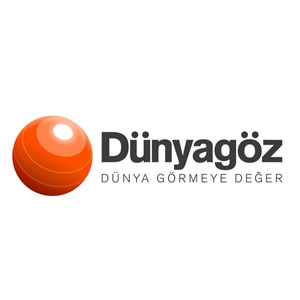

Mission Moscow : A Conversation with Evgeny Kozlov
Mr. Evgeny Kozlov, Deputy Head Mayor of Moscow Government and Chairman of the Moscow City Tourism Committee, who has come to the city to attain BLTM, the annual prestigious travel event at the Leela Ambience Convention Centre, Delhi spoke with TW Editor Anirban Dasgupta on his vision and goal with the all-new tourism initiatives in Moscow.
The bond between India and Russia has a long history of culture, literature, love, and of course politics. But recently, there has also been a lot of talk about Gastronomical tourism. Any personal experience with this?
My personal take on the bond between India and Russia stems from my recent experience of trying authentic Indian cuisine in Moscow. I thoroughly enjoyed the spicy flavours of the Curry dish I tried and it left a lasting impression on me. This made me appreciate the cultural exchange between our two countries even more. I believe that Moscow, being a culinary hub, is a great place for people from all over the world, including Indian visitors, to immerse themselves in our rich history and culture. It’s a unique experience that brings people together and showcases the diversity of the gastronomic universe. Moscow has a thriving food scene with various international cuisines to explore, from Chinese to South African and Latin American. This culinary diversity reflects the open-mindedness and curiosity of the Russian people when it comes to trying new types of food. Moscow truly has something for everyone, and I encourage Indian tourists to come and indulge in this gastronomic journey.

How optimistic are the post-pandemic recovery figures?
After the Covid-19 pandemic, we have witnessed a remarkable recovery in tourism in Moscow. In fact, we have been able to restore 90% of the pre-pandemic tourist flow. In the first half of 2023, almost a million foreign tourists visited Moscow, with over 600,000 of them arriving during the summer season. Among the non-CIS countries, China has led the way in terms of tourist traffic, followed by Iran, the United Arab Emirates, Turkey, and India. Prior to the pandemic, India’s tourist flow was steadily growing at a rate of 12-15% annually. Although we faced challenges during the pandemic, we have now put in place all the necessary conditions for a successful recovery. Moscow is known for hosting numerous international exhibitions, forums, congresses, and conferences, attracting approximately 3.6 million business visitors in the past year alone. Among these visitors, India ranks third in terms of foreign business tourists in Moscow. To further promote tourism, we have initiated the MICE Ambassadors training program in India, which aims to assist Indian businesses in exploring opportunities and selecting relevant events in Moscow.
Can you please share your vision for future tourism development in Moscow?
Thank you for asking this question. I have a multi-faceted vision for the future tourism development in Moscow.
Firstly, I believe that tourism should provide a personal and authentic experience for each individual. Therefore, customization of experiences is crucial. For business tourists, we aim to offer special infrastructure facilities that cater to their specific needs and requirements. We are closely collaborating with infrastructure providers to ensure seamless experiences for those visiting Moscow for business purposes. On the other hand, when it comes to leisure or family tourists, we recognize the importance of providing a support system and guidelines for those traveling with their families, especially children. We are working with museums, theatres, and restaurants to customize their services and products to cater to tourists of all ages, including children. Furthermore, I envision rearranging tourism in Moscow to encourage visitors to delve into the history and heritage of our country. A significant part of my tourism goal is to motivate and inspire the youth and younger generations to travel to Russia. This involves providing affordable pricing for accommodations, entertainment, museums, and other attractions.
We are already constructing tailor-made infrastructure that specifically targets the young generation in Russia, and by next year, we plan to extend and promote these offerings to international young visitors as well. By rebranding the image of Moscow as a destination for longer stays, relaxation, and enjoying various facilities, we aim to change the perception that it is merely a transit or stop-over city. Lastly, the beautiful weather in Moscow during the summer months provides an opportunity to create delightful memories for tourists. I want every visitor to experience the sunshine, green landscapes, parks, cafes, restaurants, swimming pools, and sports facilities that Moscow has to offer during this time.
In summary, my vision for the future of tourism in Moscow revolves around creating customized travel experiences for every type of traveller.
How do you prioritize sustainability and responsible tourism practices in the development of business tourism?

How easy or difficult is it to get a Visa for an Indian Tourist at present?
Acquiring a Visa for Indian tourists has become easier with the introduction of the e-visa system. Since its launch in August 2023, more than 30,000 tourists have already utilized this system. The e-visa offers several advantages over traditional visas, such as avoiding the need to visit consulates or embassies. The application process only requires a digital photograph and a scan of the passport data page. The e-visa has a validity period of 60 days from the date of issuance, with a maximum stay of 16 days in Russia. This convenient and streamlined process is available to citizens of 55 countries, including India. Indian tourists are currently ranked third in terms of business travellers from outside the CIS countries visiting Moscow.
Author: Anirban
Share article, related news.

BLTM 2023 showcases top destinations for Bleisure and MICE Travel

École Ducasse Abu Dhabi Studio, in partnership with Erth Hospitality, to open this December
No comment be the first one., leave a reply cancel reply.
Your email address will not be published. Required fields are marked *
Save my name, email, and website in this browser for the next time I comment.
e-Health Tourism

Ky shërbim shëndetësor u mundësohet turistëve të gjashtë vendeve të Ballkanit Perëndimor. Konsultimet online ofrohen në të gjitha gjuhët e vendeve të Ballkanit Perëndimor.
Këshilla për përdoruesit e smartphone:, për ios : përdorni safari, për android : përdorni google chrome, sëmundja e papritur në një vend të huaj dhe gjatë pushimit është një nga problemet më serioze që ju mund të ballafaqoheni. jeni në një vend të panjohur dhe shpesh nuk flisni gjuhën e vendasve. kjo çështje është edhe më e rëndësishme tani për shkak të covid-19. e-health tourism është shërbim që do të minimizojë shqetësimin dhe stresin për turistët, duke siguruar qasje të shpejtë dhe të lehtë në shërbimet shëndetësore edhe gjatë pushimeve. e-health tourism është koncept i ri i cili për herë të parë ofrohet në evropë dhe atë nga klinika digjitale duke ju ofruar komoditet turistëve në shtetet e ballkanit perëndimor. ky shërbim shëndetësor ju ofrohet turistëve në gjuhën angleze dhe në gjuhët e vendeve të regjionit., e-health tourism është projekt inovativ i klinikës digjitale i përkrahur nga regional cooperation council, dhe mundëson ofrimin e konsultimit online për turistët në shtetet e ballkanit perëndimor..
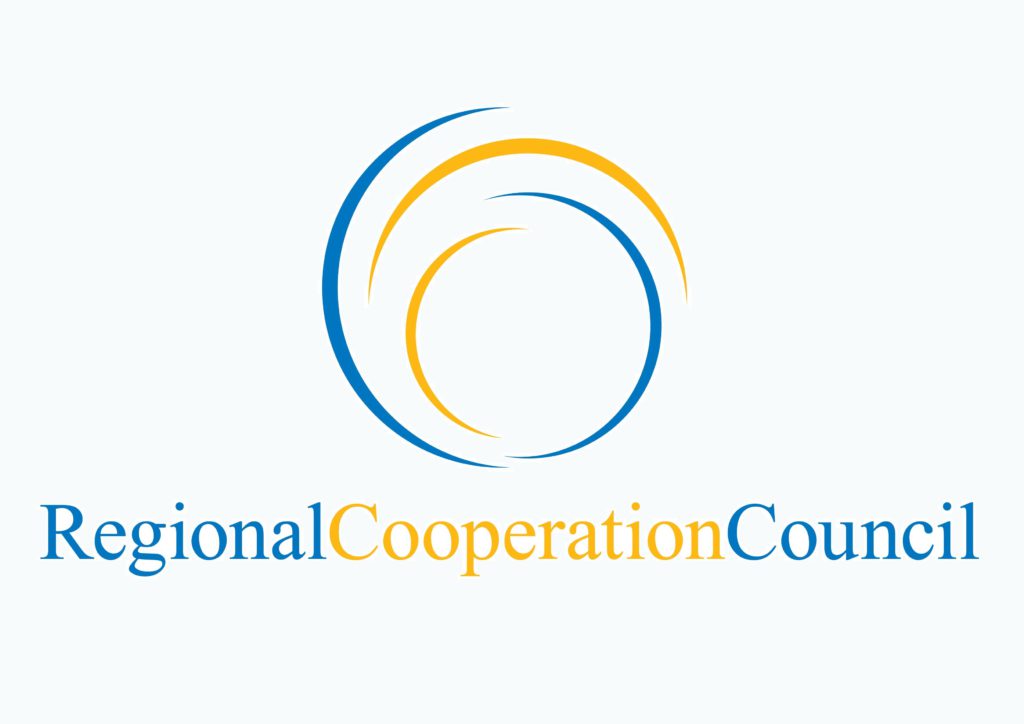

15 Top-Rated Tourist Attractions & Things to Do in Moscow
Written by Diana Bocco Updated Dec 23, 2023 We may earn a commission from affiliate links ( )
Moscow is one of Europe's most enigmatic destinations, home to a fascinating history and colorful, awe-inspiring architecture you won't find anywhere else in the world. Moscow might be one of the most populous cities in the world with over 11 million inhabitants, but this hasn't changed its strong cultural and social traditions.
Walk the cobblestone streets of the Red Square or the banks of the Moskva River early in the morning, and it's hard to tell what century you're in.
Tsarist architecture, must-see churches, and glamorous shopping opportunities blend together for a visual experience you won't forget. For ideas on what to see and do while visiting Russia, here's our list of top tourist attractions in Moscow.
1. Marvel at the Size of the Kremlin
2. catch a performance at the bolshoi theatre, 3. shop at the luxurious gum, 4. make your way into lenin's mausoleum, 5. spend an hour (or three) at red square, 6. discover history at the museum of cosmonautics, 7. ride the stunning moscow metro, 8. explore the moscow state integrated museum-reserve, 9. spend a rainy day at the tretyakov gallery, 10. walk up and down arbat street, 11. stop by the vdnkh all-russian exhibition centre, 12. wander around gorky park, where to stay in moscow for sightseeing, map of tourist attractions & things to do in moscow.
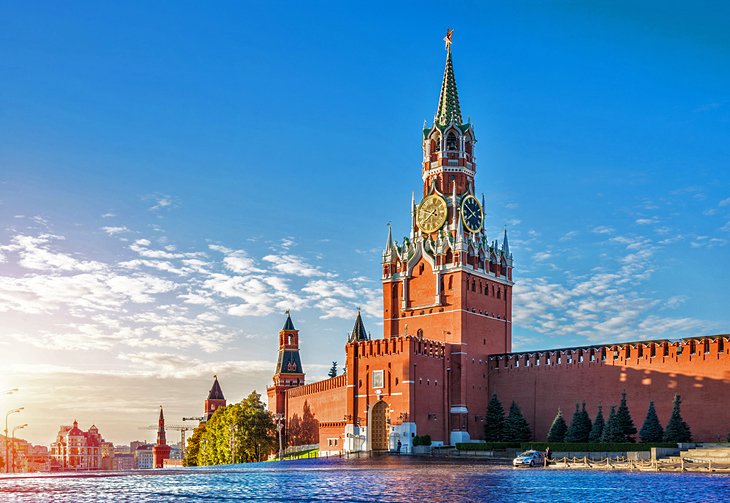
Moscow's most recognizable structure is without a doubt the Kremlin, a 15th-century fortified complex that covers an area of 275,000 square meters surrounded by walls built in the 1400s.
The Grand Kremlin Palace -which has over 700 rooms- was once home to the Tsar family and is now the official residence of the president of the Russian Federation, although most heads of state choose to reside elsewhere.
The massive complex also includes many other buildings, some of which are open to the public and can be visited regularly. Aside from three cathedrals (including one where the Tsars were once crowned) and a number of towers, the Kremlin is also home to the Armory building, a museum holding everything from the royal crown and imperial carriages to the ivory throne of Ivan the Terrible and Fabergé eggs.
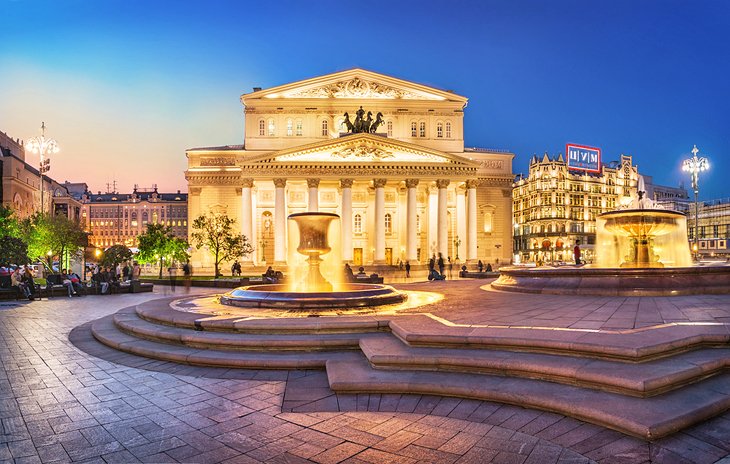
The Bolshoi Theater is home to the largest and one of the oldest ballet and opera companies in the world . While the theater has undergone several major renovations over the past century-including a recent one in 2011 to restore some of the imperial architectural details-it still retains all of its Neoclassical grandeur.
The Bolshoi Theater you see today opened in 1824, after several older versions burned down. Inside, red velvet, a three-tiered crystal chandelier, and gilt moldings give the place a Byzantine-Renassaince grandiose feel like no other.
Catching a show from the resident ballet and opera troupes is a treat, as the theater often presents a number of classic performances, such as Tchaikovsky's Mazeppa and Rachmaninoff's Francesca da Rimini, both of which originally premiered here.
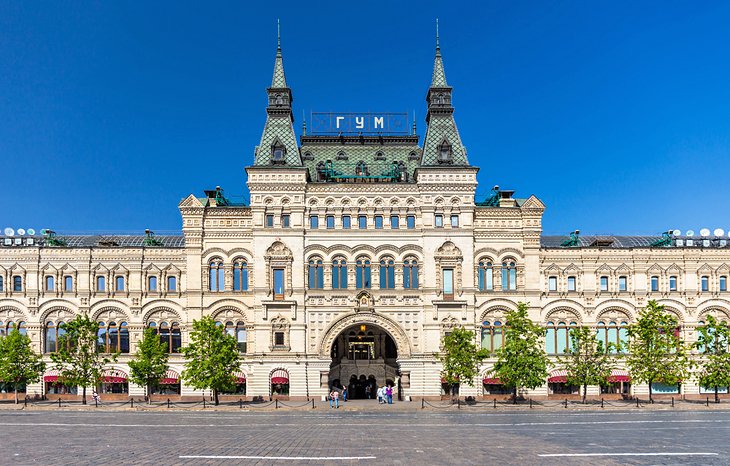
Moscow's oldest and most upscale shopping center is an architectural marvel. GUM (short for Glávnyj Universálnyj Magazín or "Main Universal Store") was built in the late 1800s in neo-Russian style to showcase a beautiful mix of a steel skeleton and 20,000 panels of glass forming an arched roof.
This was a unique construction at the time, since the glass had to be strong enough to support the snow-heavy Russian winters. The building is just as impressive outside, with all three levels covered in marble and granite.
While GUM is no longer the largest shopping center in Moscow, it's still by far the most beautiful. Home to brands like Gucci and Manolo Blahnik, this might not be the ideal destination for most budget-conscious visitors, but the beauty of the building itself is worth a visit.
On the third floor, there are also great dining options, including a Soviet-style canteen that serves traditional Russian food, and a stand selling ice cream made by hand using an original 1954 recipe originally approved by the Soviet government.
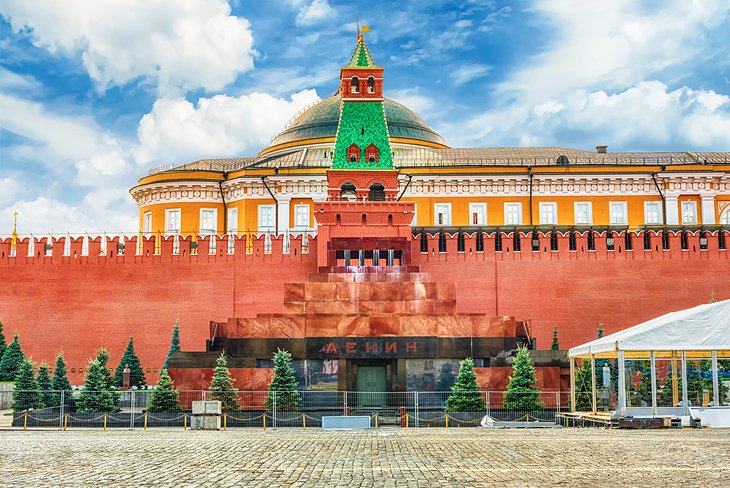
Lenin's Mausoleum, the final resting place of Soviet leader Vladimir Lenin, occupies a central spot in Red Square. His body has been in the mausoleum since his death in 1924-and although the original plan was for him to be buried after a short period of public display for mourning, the plan quickly changed.
After over 100,000 visited the tomb over a period of six weeks, it was decided that a new sarcophagus and a more permanent display space could actually preserve Lenin's body for much longer than expected-and Lenin's Mausoleum was built.
Over the years, the mausoleum and its marble stairs also became the main spot from where Soviet leaders would watch parades and events happening in Red Square.
Lenin's embalmed body can still be seen today, lying down in a bulletproof glass sarcophagus as if he's sleeping. While a visit to the mausoleum is certainly unusual, it has become a must-do for history buffs looking to understand how Lenin's legacy truly changed the nation. Come ready to wait, though -there are usually lines to get in.
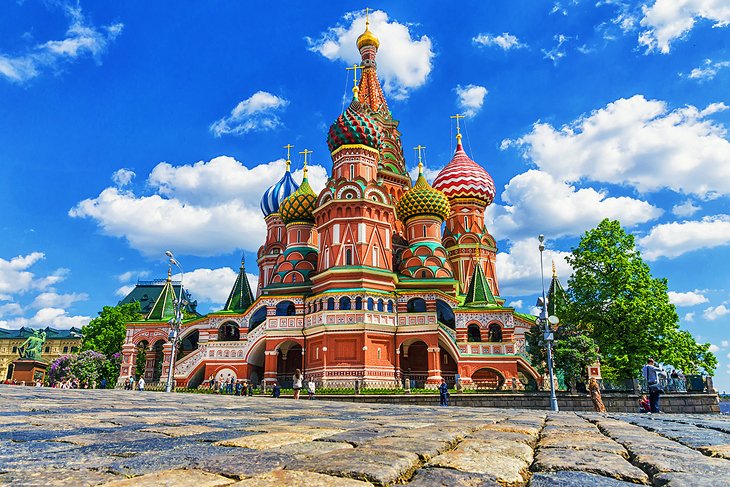
All of Moscow's main streets start at Red Square, so it's easy to see why this is considered the heart of the city. A massive space of 330 meters by 70 meters, the square is flanked by the Kremlin, Lenin's Mausoleum, two cathedrals, and the State Historical Museum.
In 1945, a massive Victory Parade was held here to celebrate the defeat of Nazi Germany by the Soviet Armed Forces.
St. Basil's Cathedral , one of the most recognizable buildings on the square, was built in 1555. The unique cathedral has architectural details inspired by Byzantine and Asian design, as well as details that resemble those found in famous mosques. There are nine individual chapels inside the church, all decorated with colorful mural art.
Both the square itself and the Kremlin are recognized as UNESCO World Heritage Sites . On weekends, there are sometimes stalls selling souvenirs and traditional items here, such as matryoshka (Russian nesting dolls), at the entrance of the square.
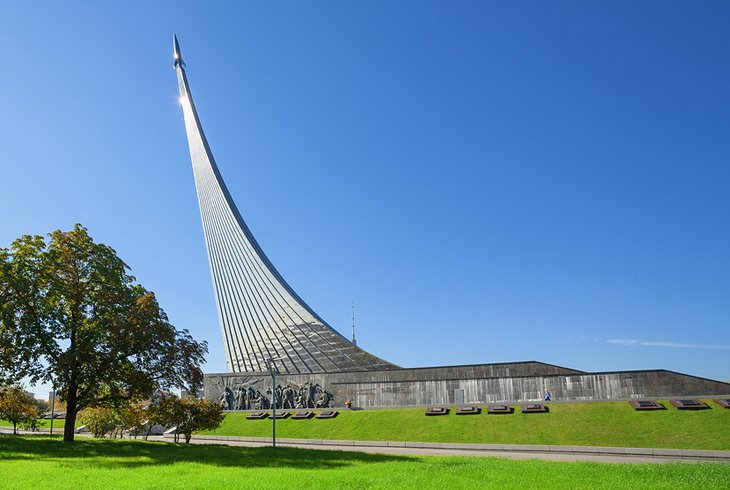
At one point, Russia and the US were toe-to-toe when it came to space exploration. While that might no longer be the case, the museum's amazing collection-which includes over 85,000 items-is still awe-inspiring.
Main exhibits include the space capsule used by Yuri Gagarin , the first human to travel into outer space; a USSR flag with moon fragments; a Soviet spacesuit; and a rocket propulsion unit from the 1960s. A special two-story hall showcases sections of the Mir space station interior, and there are also models of the first sputniks and a replica miniature spaceship.
English-language tours are available, and there's also a Cinema Hall showing subtitled short films about the history of space exploration programs and the first manned space flight.
The museum is located inside the base of the monument to the Conquerors of Space, which was built almost 20 years before the museum opened.
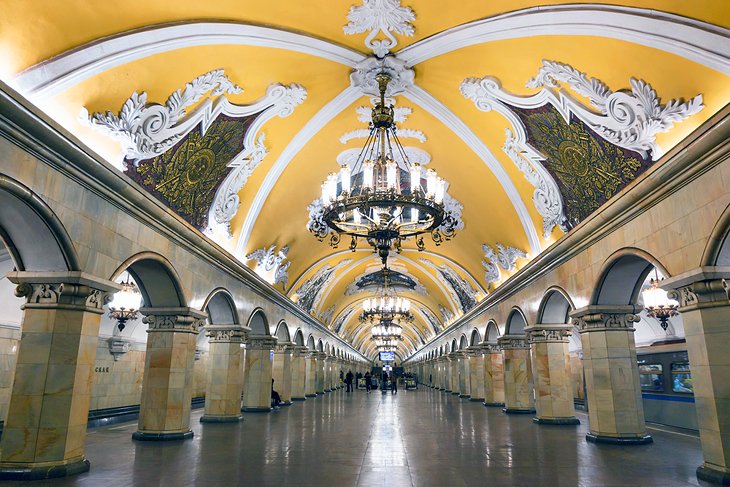
Riding the Moscow metro is an experience all in itself, but even just heading underground to walk through the stations is something no visitor should miss. With 223 stations and 12 metro lines crosscutting through Moscow, however, this can be tricky, so visiting at least a few of the most impressive ones is a good start.
Arbatskaya station was designed by a skyscraper architect, so it's no surprise that it features multicolored granite slabs and impressive bronze chandeliers.
Park Kultury station , located next to Gorky Park, is covered in marble and features reliefs of people involved in sports, while Teatralnaya station is decorated with porcelain figures dancing and wearing traditional Russian costumes.
The metro is open between 5:30am and 1:00am but it's very crowded in the early morning and after 4pm, so it's better to visit in the late morning or early afternoon to really appreciate the architecture without the crowds.
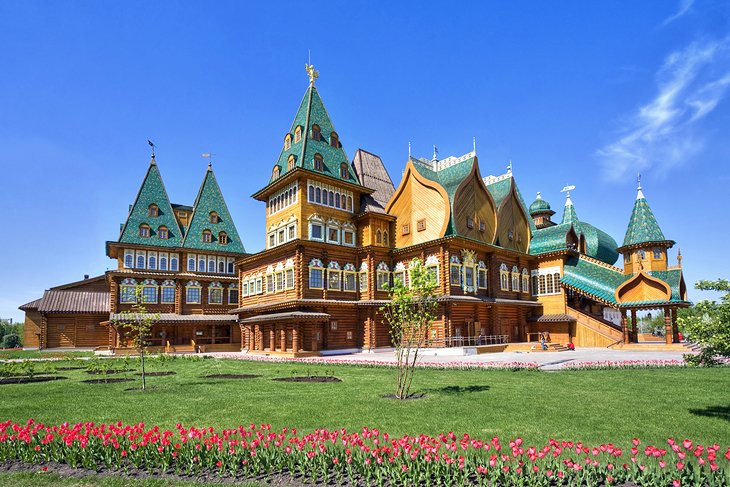
The Moscow State Integrated Art and Historical Architectural and Natural Landscape Museum-Reserve is a cultural open-air museum complex comprised of four different historical sites.
The most important site, the Kolomenskoye Estate, was once the summer residence of Tsars as far back as the 14 th century. The complex, which covers almost 300 hectares, is home to fairy-tale wooden palaces; a tent-roof stone church built in the 1500s; a water tower; fort towers and structures; and the 24-room Museum of Wooden Architecture , which includes the restored dining room of Tsar Alexei I.
Beautiful manicured gardens , riverside picnic areas, and a massive collection of both artifacts and structures make this a great destination to help you see what medieval Russia looked like. English-language tours are available, but you're also free to wander the grounds on your own.
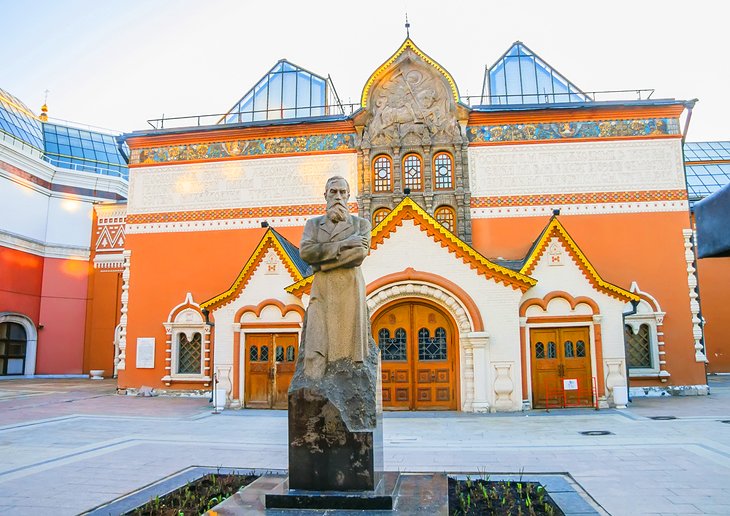
The largest collection of Russian art in the world sits here, with over 180,000 paintings, sculptures, and religious art dating back to over a millennia ago. The gallery, built using beautiful red and white colors from classical Russian architecture, is located near the Kremlin and it was built in the early 20 th century.
Significant art pieces include the Vladimir Mother of God; a Byzantine icon of the Virgin and child dating back to the 1100s; Andrei Rublev's The Trinity icon from the 15 th century; and several works by Ilya Repin, the most famous realist painter in Russia.
On the grounds of the museum, there is also an 86-meter-tall statue of Peter the Great, as well as a number of Socialist Realism sculptures.
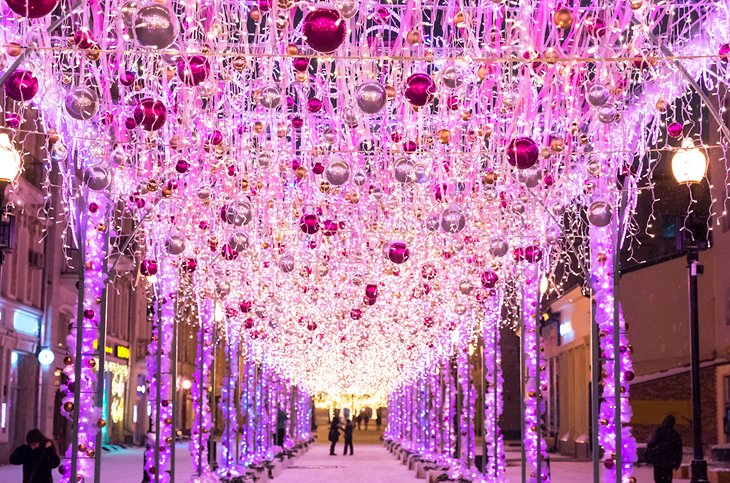
Moscow's one-kilometer-long pedestrian street has been around since the 15 th century. Originally a trade route in the outskirts of the city, Arbat Street is now very centrally located, home to posh buildings and lots of places to eat and shop.
Beautiful street lamps and two significant statues-one of Princess Turandot (from Puccini's last opera) and one of Soviet-era poet Bulat Okudzhava-adorn the street, which fills up with both locals and tourists on evenings and weekends.
A great place to pick up souvenirs or sit down at an outdoor café, Arbat Street also offers a chance to visit the former home of poet Alexander Pushkin and the café both Anton Chekhov and Leo Tolstoy used to visit.
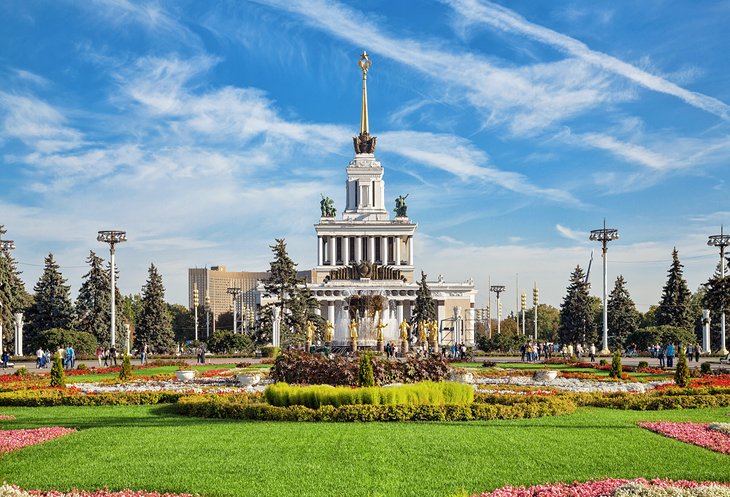
Although it was originally designed as a general-purpose trade show venue, this park complex now houses amusement rides , ice rinks , and a number of galleries and other attractions for all ages.
The park's most famous landmarks are the Moskvarium, a marine biology center home to over 8000 species of marine animals, the Garage Museum of Contemporary Art, and a shopping center selling traditional products from former Soviet countries.
There's even a film museum showing Soviet cartoons or even a full-length film (for an extra fee) and an education center offering masterclasses on everything from becoming a barista to video montage (call or write in advance to find out which ones are English-friendly).
Soviet-era pavilions, sculptures, and fountains abound here as well, including the famous Friendship of the Peoples Fountain, which features statues of women dressed in costumes from different former Soviet countries.
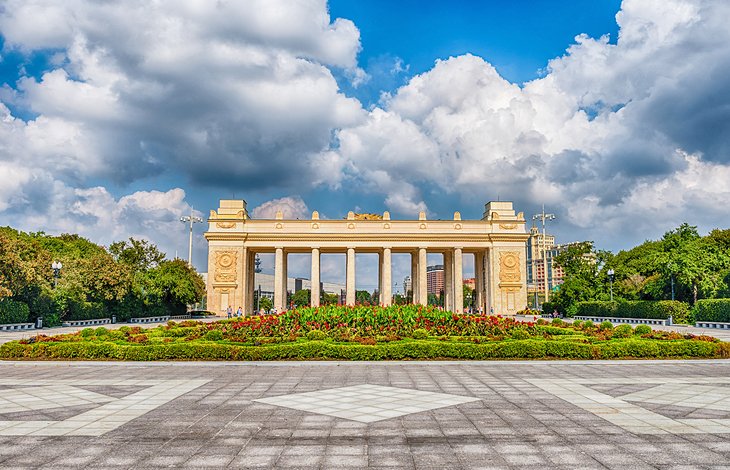
Named after the famous Russian writer Maxim Gorky (who was nominated for the Nobel Prize in Literature five times but never won it) and sitting right across the Moskva River, Gorky Park covers 120 hectares of beautiful ponds and green spaces.
Popular with both locals and tourists, the park offers a variety of things to enjoy-from sunbeds, hammocks, and drinking fountains to free yoga classes and children's playgrounds. There's free Wi-Fi and sockets for charging your phone, as well as many food stands and plenty of wild animals, including deer, rabbits, and pheasants.
Visitors can rent paddle boats and bicycles to explore the park-and from May to October, there is also an open-air movie theater, as well as scheduled presentations by street performers, musicians, and artists. Gorky Park attracts the young and old, so don't be surprised to see a mix of people exercising, playing chess, and sunbathing.
Luxury Hotels :
- Lotte Hotel Moscow is one of the top 5-star properties in Moscow offering the largest Royal Suite in Russia. The trendy rooms and suites here all have contemporary style and great city views. On-site amenities are plentiful. There are two restaurants: one serving contemporary Italian fare, and the other Japanese. There is an impressively lit indoor swimming pool, a well-known spa, and a state-of-the-art gym.
- Another excellent luxury hotel is the Ararat Park Hyatt Moscow . The residential-style property is in the heart of Moscow just next to the Bolshoi Theatre and within walking distance of the Kremlin and Red Square. The rooms and suites have been opulently designed by Tony Chi. The on-site restaurant serves a mix of European and Armenian specialities. There is also a Japanese sushi bar and a rooftop lounge with fabulous city views.
- The St. Regis Moscow Nikolskaya also has a central location just a few minutes from the Kremlin and Red Square. The 5-star property has a mix of elegant rooms and suites, including interconnecting room options for families with kids. There are multiple restaurants on-site including an Italian bistro. Other amenities include the fabulous Iridium Spa, which does a full range of treatments and has an indoor swimming pool, sauna, and steam room.
Mid-Range Hotels :
- Palmira Business Club is a top mid-range choice. The contemporary lifestyle hotel offers well-appointed rooms and suites, including options for families. Suites are quite spacious and have kitchenettes. Amenities here include a complimentary breakfast at the on-site restaurant, a hot tub, sauna, and spa. There is also a fitness center.
- The trendy Mercure Moscow Baumanskaya offers a mix of rooms and suites with contemporary decor. The mid-range hotel can arrange airport transportation and offers baggage storage. Other amenities include a restaurant and room service. The front desk is open 24 hours.
- Boutique Hotel Brighton is about 10 minutes from the city center in a leafy park area. It offers excellent value for money and has charming rooms and suites with sound-proof windows and doors, as well as blackout curtains. A complimentary breakfast is served, and there is also an indoor swimming pool.
Budget Hotels :
- Hotel Ibis Budget Moscow Panfilovskaya is about a 15-minute drive from Moscow's downtown, and it's within walking distance from a metro station that will take you there. The soundproof rooms at this budget property are clean, comfortable, and can sleep up to three people. The hotel is pet friendly, has paid parking available on-site, and also has a salon.
- If you just need a budget hotel near the airport then check out Aviator Hotel Sheremetyevo . Located right at the airport, it has soundproof rooms, including options for families. Amenities include an indoor play area for kids, a sauna and swimming pool, and a free breakfast.
More Related Articles on PlanetWare.com
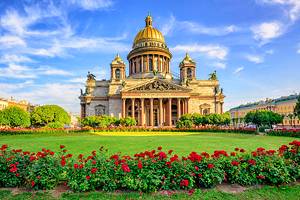
Exploring Russia: Whether you are interested in history, nature, or architecture, there's much to see in Russia. For a good introduction to some of the most fascinating spots in the country, take a look at our article on the Best Places to Visit in Russia . For more on Russia's second-largest city and all it has to offer, check out our piece on the Top-Rated Tourist Attractions in St. Petersburg .


IMAGES
VIDEO
COMMENTS
The integration of e-health applications in medical tourism presents new opportunities and challenges for various industry stakeholders: Healthcare Providers: E-health technologies enable healthcare providers to expand their reach, catering to patients from different countries. These tools also help optimize resource allocation, streamline ...
Exploring Health Tourism. The ETC/UNWTO publication on Exploring Health Tourism aims to provide a better understanding of the growing segment of wellness and medical tourism. The study introduces the evolution of health-related tourism products and services from all around the world and provides insights into the current situation of the ...
The ETC/UNWTO publication on Exploring Health Tourism aims to provide a better understanding of the growing segment of wellness and medical tourism. The study introduces the evolution of health-related tourism products and services from all around the world and provides insights into the current situation of the industry, as well as the future ...
Discover how telemedicine and digital health can help your organization attract international patients and grow your medical tourism business with Global Healthcare Resources. medical tourism, telemedicine, digital health, international patients, healthcare innovation, remote consultations, virtual care, healthtech, e-health, telehealth, mHealth, patient engagement, medical travel, global ...
Explore the rise of medical tourism, its driving factors, popular destinations, and treatments, as well as the challenges and future trends shaping this rapidly growing industry. medical tourism, global perspective, healthcare costs, waiting times, advanced treatments, healthcare quality, travel accessibility, Asia, Latin America, Europe, technology, legal and ethical issues, quality and ...
eISBN: 978-92-844-2020-9 | ISBN: 978-92-844-2019-3. Abstract: The ETC/UNWTO publication on Exploring Health Tourism aims to provide a better understanding of the growing segment of wellness and medical tourism. The study introduces the evolution of health-related tourism products and services from all around the world and provides insights into ...
PR No.: PR 18100. Madrid, Spain, 27 December 2018 - The World Tourism Organization (UNWTO), together with the European Travel Commission (ETC) launched a new report on health tourism. Part of their joint research programme, the study is the first attempt to set a coherent conceptualization of health tourism and define the motivations behind ...
Exploring Health Tourism - Executive Summary. Published: December 2018 Pages: 16. eISBN: 978-92-844-2030-8 | ISBN: 978-92-844-2029-2. Abstract: The ETC/UNWTO publication on Exploring Health Tourism aims to provide a better understanding of the growing segment of wellness and medical tourism. The study introduces the evolution of health ...
In this section, we reflect upon the opportunity the crisis provides for the transformation of e-Tourism research. Beyond the immediate health crisis, COVID-19 is essentially a crisis of economized societies rooted in the growth-paradigm (Ötsch 2020).In fact, governments worldwide reacted to the crisis based on prognosed GDP shortfalls and steep increases in unemployment with "rescue ...
Innovative Medical Tourism Strategy (In-MedTouR) is a project implemented within the frame of Interreg Greece-Italy V/A 2014-2020 program (Fig. 1).The project, which is co-funded by European Union, European Regional Development Funds (ERDF) and by National Funds of Greece and Italy, aims at creating a cluster of cooperation between Greece's and Italy's businesses engaged in Health ...
ABSTRACT. Medical and health tourism is a significant area of growth in the export of medical, health and tourism services. Although spas and improved well-being have long been part of the tourist experience, health tourism now includes travel for medical purposes ranging from cosmetic and dental surgery through to transplants and infertility ...
Abstract. When reading about health and medical tourism one might think that both terms apply to the same category of tourism, based on: caring for one's health, stress relief, personal wellbeing, fitness and body attractiveness. Indeed, many times these two terms are used as synonyms for one another. For a better understanding of the whole ...
Abstract. This article explores the concept of health-care tourism. It is based on a pilot study that involved a survey of 206 travellers, 22 travel agents, 12 medical doctors and two herbalists; a review of the tourism and travel literature; and content analysis of 284 travel brochures about 24 countries. Healthcare tourism is defined, the ...
Health tourism is also important as it is a reflection of my earlier point - people are taking more of an interest in their health. Regardless of whether it's wellness tourism or medical tourism, health tourists are travelling with the primary focus of improving their mind, body or life in some way. This is obviously a positive factor for society.
In contrast to this it is difficult to find literature on the subject of eHealth and tourism. Combining the terms information needs and patients studies about cancer patients' information needs [LB00] are found. Travel medicine brings tourism and healthcare together but does not deal with information and communication technologies.
Health & medical tourism. Vivien Breitrück and Elena Nunn. Chapter 7.0 in The Long Tail of Tourism, 2011, pp 57-67 from Springer. Abstract: Abstract When reading about health and medical tourism one might think that both terms apply to the same category of tourism, based on: caring for one's health, stress relief, personal wellbeing, fitness and body attractiveness.
Each year, millions of US residents travel to another country for medical care which is called medical tourism. Medical tourists from the United States most commonly travel to Mexico and Canada, and to several other countries in Central America, South America, and the Caribbean. The reasons people may seek medical care in another country ...
As E-Health Tour; In line with world health standards, we offer privileged health consultancy to patients who demand international health services with our international health tourism authority . Our health tourism service covers Turkey and the international area and includes contracted and accredited health institutions in many countries such ...
Moscow Technologies. City for Business. Moscow culture. Moscow Parks. Old Moscow Tales. Tourist tips, city news, interesting events and historical facts, large projects - all about life in Moscow is on one portal.
Here you'll find everything you need to plan a trip to Russia's fascinating capital, from help booking hotels and airport transfers to detailed descriptions of the city's sights and cultural attractions. Whether you're coming to Moscow as a tourist or on business, we're confident you'll find our range of services indispensable.
Mr. Evgeny Kozlov, Deputy Head Mayor of Moscow Government and Chairman of the Moscow City Tourism Committee, who has come to the city to attain BLTM, the annual prestigious travel event at the Leela Ambience Convention Centre, Delhi spoke with TW Editor Anirban Dasgupta on his vision and goal with the all-new tourism initiatives in Moscow. The bond between India and Russia has a long history ...
e-Health Tourism është shërbim që do të minimizojë shqetësimin dhe stresin për turistët, duke siguruar qasje të shpejtë dhe të lehtë në shërbimet shëndetësore edhe gjatë pushimeve. e-Health Tourism është koncept i ri i cili për herë të parë ofrohet në Evropë dhe atë nga Klinika Digjitale duke ju ofruar komoditet ...
Spend a rainy day at the Tretyakov Gallery. 10. Walk Up and Down Arbat Street. 11. Stop by the VDNKh All-Russian Exhibition Centre. 12. Wander Around Gorky Park. Where to Stay in Moscow for Sightseeing. Map of Tourist Attractions & Things to Do in Moscow.